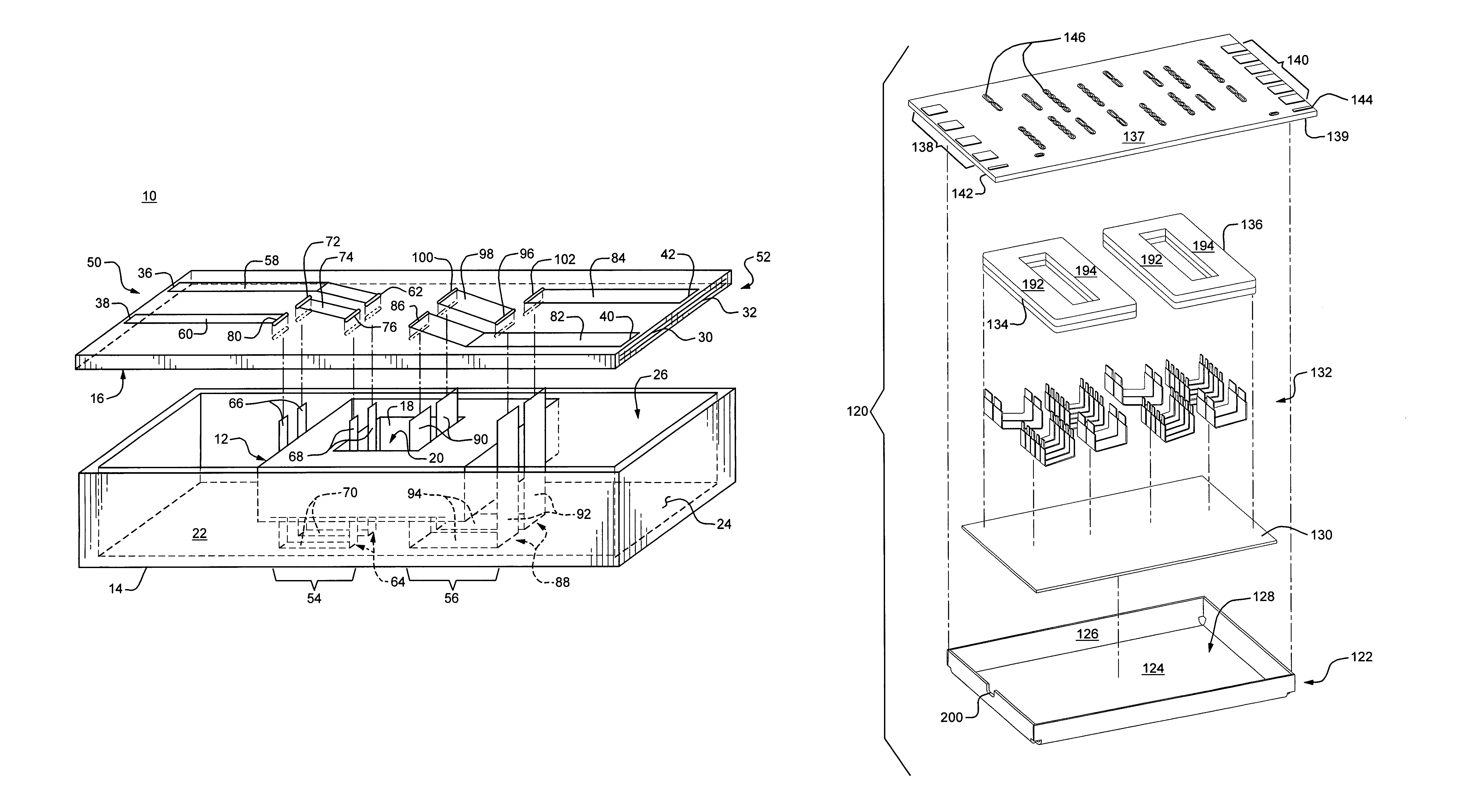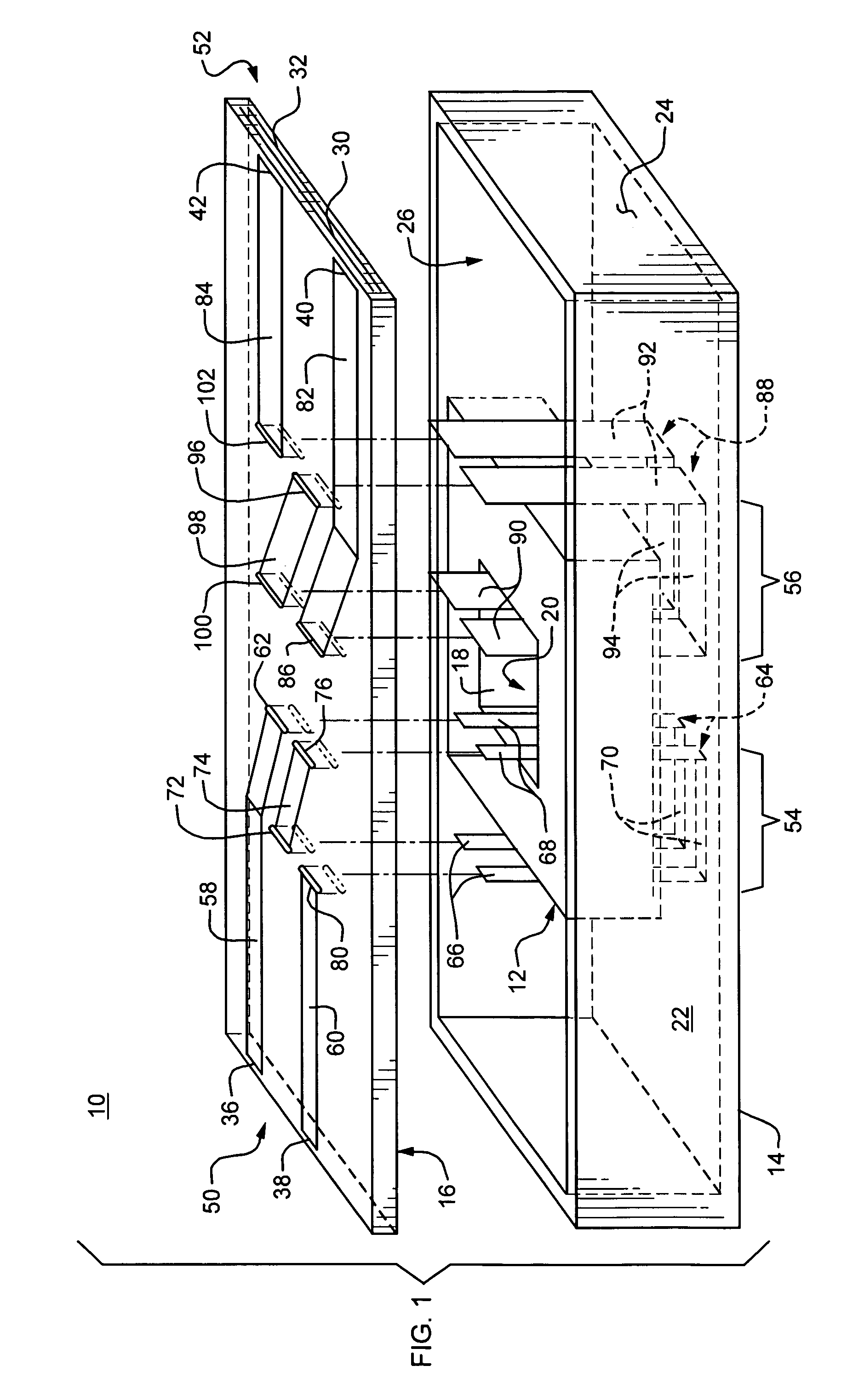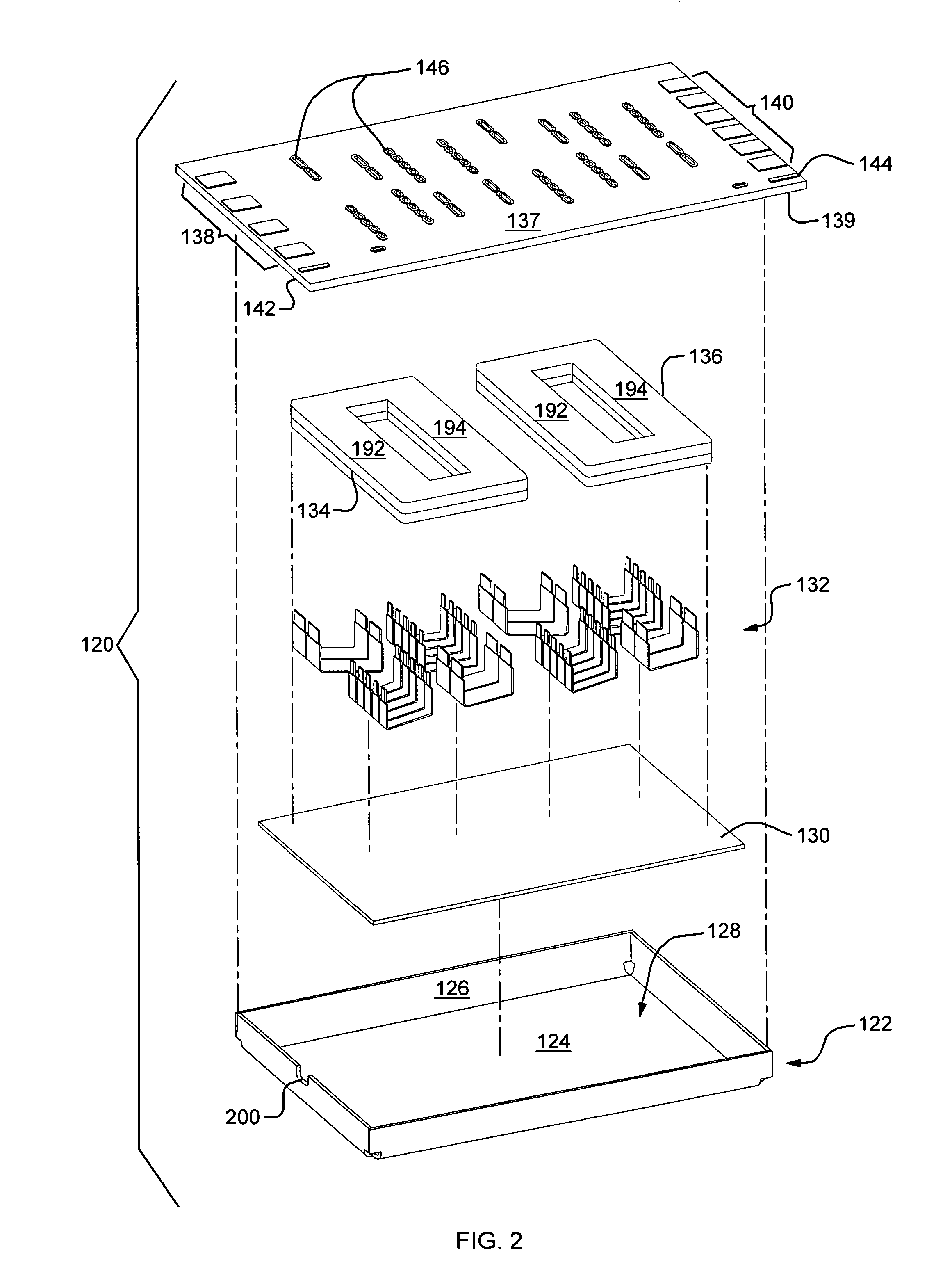Fabrication method and structure for embedded core transformers
a technology of transformers and core transformers, applied in the field of high-power, high-density electrical transformers, can solve the problems of increasing the risk of corona and voltage breakdown during operation, increasing the operating temperature, and adding cos
- Summary
- Abstract
- Description
- Claims
- Application Information
AI Technical Summary
Benefits of technology
Problems solved by technology
Method used
Image
Examples
Embodiment Construction
[0032]Referring to FIG. 1, an illustrative example of an electrical transformer 10 according to some aspects of the present invention is shown having a magnetic core 12, e.g. a ferrite core, disposed between a pair of opposing dielectrics or electrical insulators. In particular, the first dielectric comprises a base enclosure 14 and the second dielectric comprises a cover member formed as a multilayer printed circuit board (PCB) 16. The magnetic core 12 forms a magnetic circuit with a volume of material with high magnetic permeability formed in a closed magnetic loop. The closed magnetic loop comprises an annular wall 18 surrounding an aperture 20. The aperture 20 passes completely through the annular wall 18. In the example shown in FIG. 1, the annular wall 18 comprises a four sided rectangular wall having a rectangular cross-section and forming a rectangular aperture 20. The preferred magnetic material comprises ferrite material such as the commercially available Ferroxcube 3F45 f...
PUM
 Login to View More
Login to View More Abstract
Description
Claims
Application Information
 Login to View More
Login to View More - R&D
- Intellectual Property
- Life Sciences
- Materials
- Tech Scout
- Unparalleled Data Quality
- Higher Quality Content
- 60% Fewer Hallucinations
Browse by: Latest US Patents, China's latest patents, Technical Efficacy Thesaurus, Application Domain, Technology Topic, Popular Technical Reports.
© 2025 PatSnap. All rights reserved.Legal|Privacy policy|Modern Slavery Act Transparency Statement|Sitemap|About US| Contact US: help@patsnap.com



